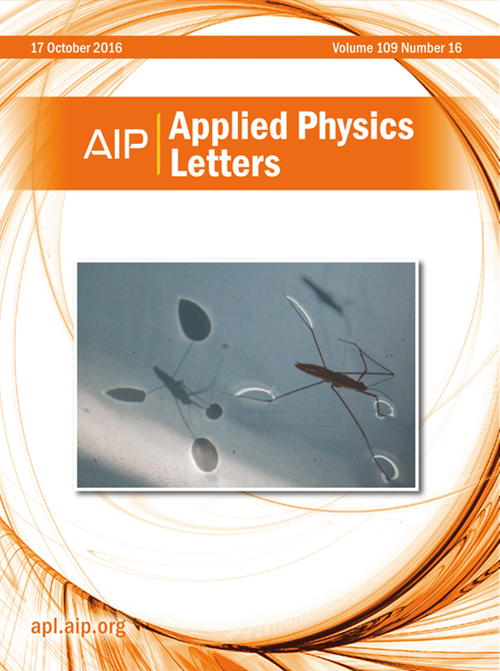基于范诺共振等离子体核壳纳米粒子的光学识别与防伪
IF 3.5
2区 物理与天体物理
Q2 PHYSICS, APPLIED
引用次数: 0
摘要
具有非对称和超尖锐共振线形状的法诺共振在各种光散射场景中得到了广泛的研究,在传感、信息处理和光学识别方面得到了广泛的应用。在多层纳米颗粒(NPs)中出现的法诺共振特别有趣,因为其尖锐的梳状共振线形状可能使纳米尺度上的光学识别成为可能。本文提出了基于核-壳(等离子体-介电)NPs散射响应的光学物理不可克隆函数(PUF)的概念。具体来说,Fano共振频率附近尖锐的不对称光谱响应对扰动(例如纳米制造缺陷)高度敏感,可以作为基于puf的识别和防伪应用的独特电磁指纹。本文从理论上和统计上证明了fano共振多层NPs的散射可以被视为生成PUF加密密钥的完美熵源,在唯一性、随机性、编码容量和NIST随机性测试结果方面具有出色的性能。提出的光学PUF为实现用于光学识别、认证和防伪应用的纳米标签开辟了途径。本文章由计算机程序翻译,如有差异,请以英文原文为准。
Optical identification and anti-counterfeiting based on plasmonic core–shell nanoparticles with Fano resonance
Fano resonance with an asymmetric and ultrasharp resonant line shape has been extensively studied in various light scattering scenes, unlocking several applications for sensing, information processing, and optical identification. Fano resonance appearing in multilayered nanoparticles (NPs) is particularly intriguing as its sharp and comb-like resonant line shape may enable optical identification at the nanoscale. We herein propose the concept of the optical physical unclonable function (PUF) based on the scattering responses of core–shell (plasmonic-dielectric) NPs. Specifically, the sharp, asymmetric spectral responses near the Fano resonance frequency, which are highly sensitive to perturbations (e.g., nanomanufacturing imperfections), can be exploited as a unique electromagnetic fingerprint for PUF-based identification and anti-counterfeiting applications. Here, we theoretically and statistically demonstrate that scattering from Fano-resonant multilayered NPs can be regarded as a perfect entropy source for the generation of PUF encryption keys, with outstanding performance in terms of uniqueness, randomness, encoding capacity, and NIST randomness test results. The proposed optical PUF opens pathways to implement nano-tags for optical identification, authentication, and anti-counterfeiting applications.
求助全文
通过发布文献求助,成功后即可免费获取论文全文。
去求助
来源期刊

Applied Physics Letters
物理-物理:应用
CiteScore
6.40
自引率
10.00%
发文量
1821
审稿时长
1.6 months
期刊介绍:
Applied Physics Letters (APL) features concise, up-to-date reports on significant new findings in applied physics. Emphasizing rapid dissemination of key data and new physical insights, APL offers prompt publication of new experimental and theoretical papers reporting applications of physics phenomena to all branches of science, engineering, and modern technology.
In addition to regular articles, the journal also publishes invited Fast Track, Perspectives, and in-depth Editorials which report on cutting-edge areas in applied physics.
APL Perspectives are forward-looking invited letters which highlight recent developments or discoveries. Emphasis is placed on very recent developments, potentially disruptive technologies, open questions and possible solutions. They also include a mini-roadmap detailing where the community should direct efforts in order for the phenomena to be viable for application and the challenges associated with meeting that performance threshold. Perspectives are characterized by personal viewpoints and opinions of recognized experts in the field.
Fast Track articles are invited original research articles that report results that are particularly novel and important or provide a significant advancement in an emerging field. Because of the urgency and scientific importance of the work, the peer review process is accelerated. If, during the review process, it becomes apparent that the paper does not meet the Fast Track criterion, it is returned to a normal track.
 求助内容:
求助内容: 应助结果提醒方式:
应助结果提醒方式:


